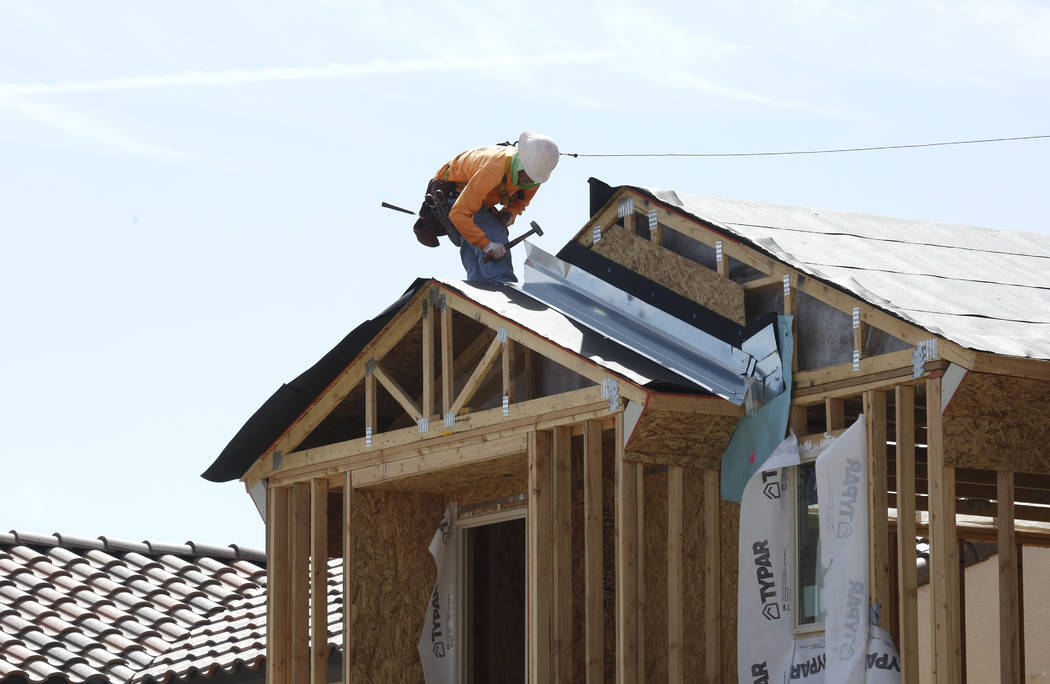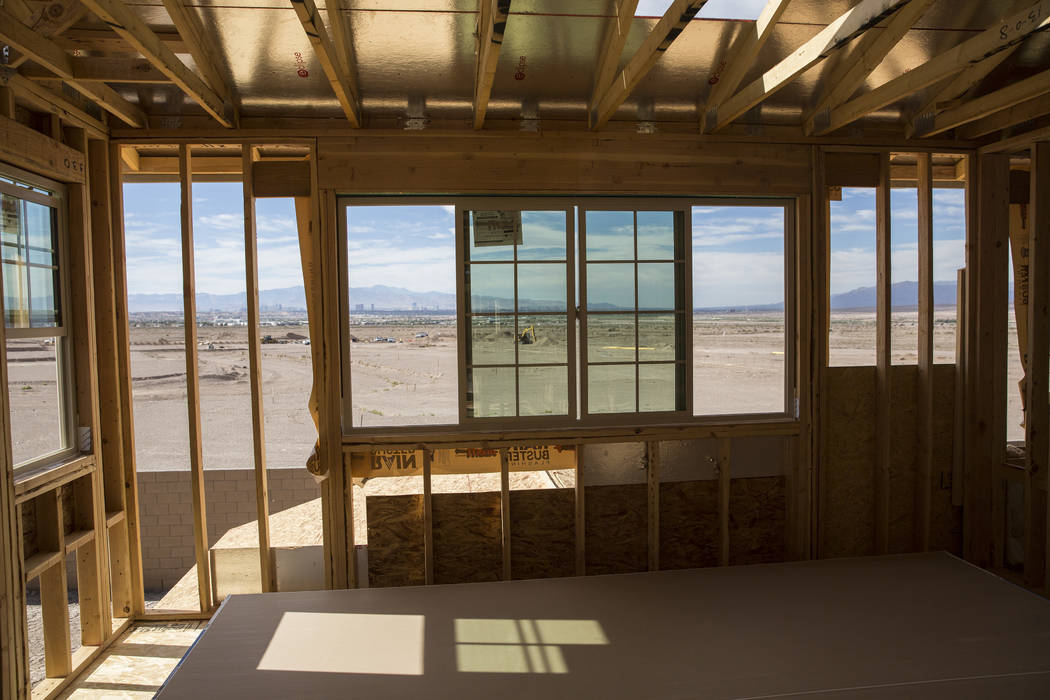

The question over the affordability of new homes and why prices keep increasing has Realtors and their buyers still asking why.
This was the topic of a recent panel sponsored by the Nevada Association of Real Estate Brokers.
There’s the price of resale homes, what other builders are charging and that the cost of the land is increasing, according to Ed Smith, director of sales for the Las Vegas division of Beazer Homes.
“Materials have gone up, labor has gone up and wood and lumber have gone through the roof, and those are all factored into it,” Smith said. “At the end of the day, the market will bear what the market will bear and our problem is to figure out how to handle that. If the market says it can sold at $250,000 we have to find a way to make it work.”
Luke O’Loughlin, general sales manager for Richmond American Homes, said when communities open, there’s 18 months to two years of work going back to when the land was bought and that sets the stage of what the prices will ultimately be.
Land is a big part of the cost, according to Jen Haack, senior manager of strategic marketing for KB Home. Five years ago, KB spent $100,000 to $200,000 an acre on land and today that same land is going for $400,000 to $500,000, she said.
For home sites measuring one-eighth of an acre, that’s a $50,000 increase per lot in five years, Haack said. There’s also lumber increases and labor shortages that increases prices, and KB is paying $12 more a square foot to build homes than five years ago, she said.
“For a 2,000 square-foot house, that’s another $24,000 increase we have seen,” Haack said. “I know sometimes consumers think builders are being greedy, and that they want more money. I promise you we’re not making more money today than we were a couple of years ago.”
Haack said public builders like KB borrow money from the corporate office to buy land and that is interest that has to be repaid. If there’s a need for new floor plan designs, there’s hefty fees for architecture, she said.
“As a Realtor right now if you like the price you see, I would say you should buy,” said Geoff Gorman, vice president of sales for Pardee Homes. “I don’t see anything in the next three, four, five, six months that costs will go down anytime soon (with interest rates and prices going up).”
Gorman said homes have a lot more features in them than they did in the past. At one time, there was ceramic tile, a grout kitchen countertop and cabinetry that would be viewed as cheap. A microwave wasn’t included, he said.
“Granite used to be an upgrade, but it’s standard now and a lot of builders include microwaves,” Gorman said. “When you look at prices today versus those five to 10 years ago, there’s a lot more included.”
Haack said at KB buyers typically do 4 percent to 6 percent in upgrades compared to 10 to 15 percent that was typical in the past. She said they don’t do a model home with more than 8 percent in upgrades to show how pretty and energy-efficient a home is with a minimal amount of changes.
Realtors wonder why builders charge a lot premium, and Gorman said it’s because not every lot is the same size and location. Buyers see that and are willing to pay a premium, he said.
“In our last phase at Castle Rock (in North Las Vegas), we had some homesites with 70 linear feet in the backyard and some with 20,” Gorman said. “We’re going to charge more for the giant home sites. There are some people that don’t want to pay extra or have giant home sites, and it doesn’t get passed on to everybody.”
O’Loughlin said it comes down to supply and demand. If there are 150 homes in a community and only 50 can have a pool, there’s value in that. A larger home site requires more material to build a block wall, berm or retaining wall, he said.
Lot premiums give buyers options of where they want to be, O’Loughlin said.
“At the end of the day it is the total purchase price and you choose what you want in your home and work off that final number,” O’Loughlin said. “We could very easily do zero-lot premium, but you are still going to have the same exact price. We just work it into the price. There’s value behind every single one of those lots, and that’s why there’s a variety of price points to work with.”
Smith said in every one of Beazer’s communities, it has home sites without a premium on them while others do. Those are larger, wider and deeper lots, he said.
Some builders pointed out that it takes five to six months to build a home and costs can increase per plan by $2,000 to $4,000 per home once they go under contract. The base price isn’t raised to accommodate those increased costs, and lot premiums provide builders a buffer. Building trades can walk in and ask for $1 per square foot so prices can increase quickly, they said.
Gorman cited the boom a decade ago when price increases by some builders were “pretty obnoxious.” Some raised prices $10,000 a phase and released three phases in one day.
“I’m not aware of anything like that happening,” Gorman said. “At Pardee, we understand who we are selling homes to. You just can’t have an obnoxious price increase the way it happened during the boom. Right now, I’m not too worried about things going sky-high.”
Builders said they happily pay brokerage fees to Realtors who bring in clients as long as their client has them listed as their agent when they come to visit the sales office. Several said at least 70 percent of their buyers have Realtors and 3 percent of the total purchase price is not unusual.
“The national average is 66 percent of all new-home transactions involve a broker, and we do 81 percent in Las Vegas,” Smith said. “You guys are our lifeblood. We’re not interested in getting one by on Realtors. That’s a bad way to do business.”
“We’re trying to accomplish the same thing,” Smith said. “and that’s making buyers happy.”






